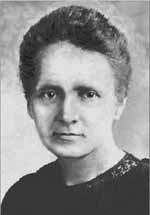Field X-Rays: Difference between revisions
No edit summary |
m (Text replace - "[[Category:Culture_and_society" to "[[Category:Engineering and society") |
||
| Line 17: | Line 17: | ||
[[Category:Medical_services]] | [[Category:Medical_services]] | ||
[[Category:X-rays]] | [[Category:X-rays]] | ||
[[Category: | [[Category:Engineering and society]] | ||
[[Category:Health]] | [[Category:Health]] | ||
Revision as of 16:49, 22 July 2014
Field X-Rays
At the outbreak of World War I in August 1914 many hospitals in many countries already had x-ray machines. But these machines, of course, were far removed from the battlefield where many people were facing dire injury and death. As the war dragged on and casualties mounted people realized that many lives could be saved if quick diagnosis by x-ray was possible.
One of these people was Marie Curie. By 1914 Curie was already one of the most famous women in the world. Eight years before she had become the first woman ever to hold a professorship at the Sorbonne, the famous university in Paris. She was the recipient of both the Nobel Prize in Physics and the Nobel Prize in Chemistry. The first was received in 1903 for work she, her husband Pierre Curie, and Henri Becquerel won for the discovery of radioactivity. The second, in 1911, was for the isolation of pure radium.
Curie was a brilliant scientist who also had humanitarian leanings. Disheartened by the trauma brought on by war she became determined to do what she could to lessen the suffering. Curie launched a project to establish a radiological service for the French army and bring x-ray machines nearer to the battlefield. She obtained vehicles that could be converted into mobile x-ray units and worked with x-ray equipment manufacturers to get suitable machines. She also worked with electrical manufacturers to obtain portable electric generators. From these materials she was able to make effective field radiological units.
Curie directed the work in the field herself. She trained people in the use of the machines and constantly made improvements to the equipment and procedures. By the end of the war she had built twenty mobile radiological units and some two hundred permanent posts. In 1917 and 1918 these mobile facilities took more than a million x-rays. Having x-rays near the battlefield meant that doctors could locate and treat wounds more quickly and save more lives.
Curie’s mobile units gave people a chance to help. As director of the army’s radiological service Curie had to recruit large numbers of people. Hundreds of them—drivers, technicians, and radiologists—were women. Working in the field x-ray unit provided these women with an active way of supporting the war effort and helping those in need. Curie’s efforts during the war saved thousands of lives and set an example in the humane use of technology.
